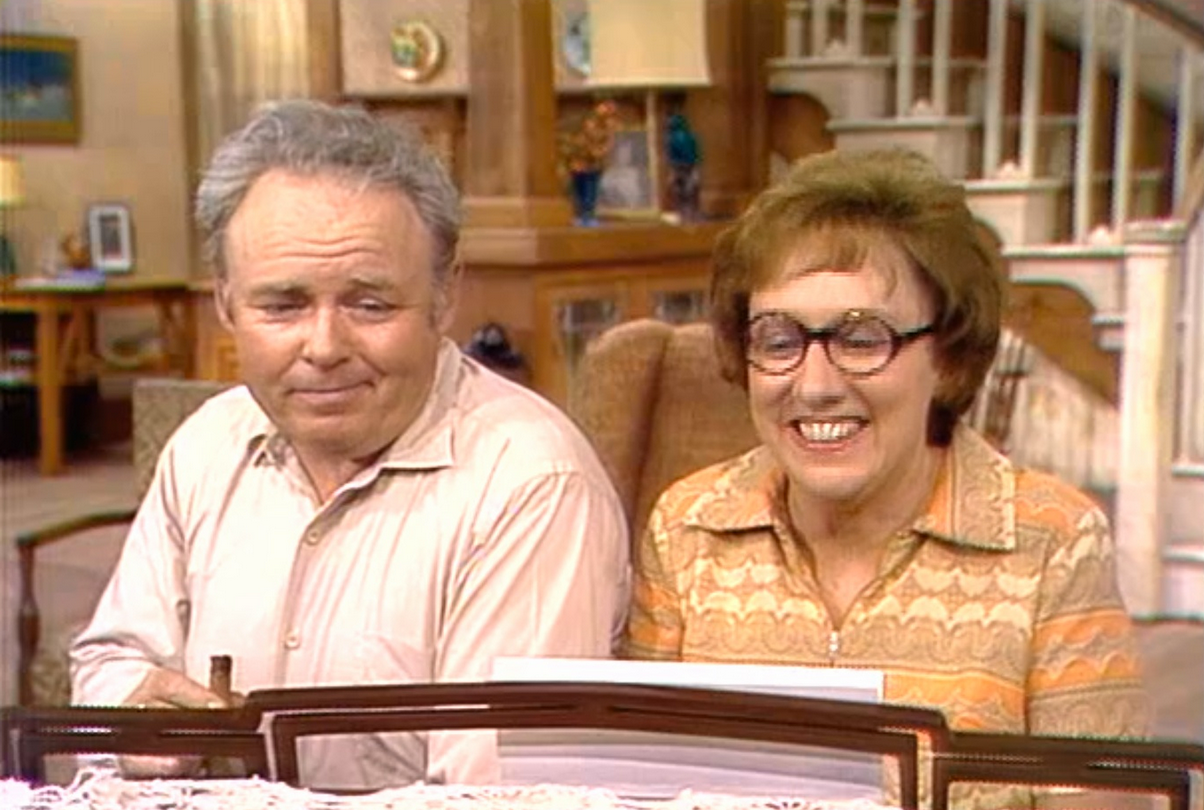
Introduction: While All in the Family is celebrated for its groundbreaking portrayal of societal issues, the behind-the-scenes story of its creation is just as fascinating. The show didn’t just change television – it revolutionized how social issues were discussed on prime-time TV. But the road to success wasn’t easy. From battles with censorship to casting decisions that shook up the industry, All in the Family was a trailblazer in every sense of the word. Let’s take a deep dive into the untold story behind one of TV’s most iconic sitcoms.
The Controversial Casting of All in the Family: Casting for All in the Family was a bold move. The role of Archie Bunker was originally offered to a number of actors, but it was Carroll O’Connor’s powerful audition that sealed the deal. O’Connor, an actor known for his intense dramatic roles, was initially seen as an unconventional choice for a sitcom. Yet, his ability to blend humor with emotional depth made him perfect for the role of Archie.
Jean Stapleton, who played Edith, was equally unexpected. She had been known for her work in theater and had little experience in television comedy. However, her portrayal of Edith as both naive and surprisingly wise became one of the show’s most endearing qualities.
The casting of Rob Reiner as Mike “Meathead” Stivic was also an inspired choice. Reiner, an up-and-coming actor, embodied the liberal, free-thinking character who often clashed with Archie’s conservative views. This dynamic became one of the show’s central conflicts.
The Creation of Archie Bunker: Archie Bunker was not just an accident of casting – he was a character that Norman Lear, the show’s creator, had been carefully constructing for years. The character of Archie was inspired by Lear’s own father, who held many of the same prejudices and views as Archie. In many ways, Archie’s bigotry reflected the attitudes of a generation that was being left behind by the social and political upheavals of the 1960s.
The creation of Archie was also a response to the sanitized, unrealistic portrayal of American families that had dominated television up until then. Lear wanted to create a show that reflected the complexity of American life, with all its flaws and contradictions. Archie, as the embodiment of those flaws, was the perfect vehicle for this exploration.
Controversy and Censorship Challenges: All in the Family faced numerous challenges with censorship. Many of the show’s episodes touched on topics that had never been addressed on prime-time television – from racism to women’s rights to mental health. The network was initially hesitant to allow such controversial content on the air, but Norman Lear fought tirelessly to ensure that the show maintained its integrity.
One of the most controversial moments in the show’s history was the use of the word “dyke” in an episode dealing with women’s liberation. The network pushed back, fearing that it would alienate viewers, but Lear insisted that the word was necessary to capture the harsh realities of the time.
How All in the Family Changed the Sitcom Format Forever: Before All in the Family, sitcoms were known for their light-hearted, problem-solving plots. But the show broke this mold by addressing real-world issues. The format of All in the Family was also revolutionary – it used the multi-camera format, with a live studio audience, a technique that had previously been used for dramas.
By allowing the audience to respond in real time, the show created an atmosphere that felt more immediate and less polished than other sitcoms. This approach gave the show a raw, unpredictable edge that made it feel real.
Norman Lear’s Vision: At the heart of All in the Family was Norman Lear’s vision. He saw television not just as entertainment but as a powerful tool for social change. By using comedy to address difficult issues, Lear was able to make audiences laugh while also making them think critically about their society. His refusal to shy away from controversial topics set All in the Family apart from other sitcoms of its time.
The Cast and Their Real-Life Chemistry: The chemistry between the cast members was another key factor in the show’s success. Carroll O’Connor, Jean Stapleton, Rob Reiner, and Sally Struthers formed an ensemble that was as memorable off-screen as it was on. Despite the tensions their characters had on-screen, the cast members formed a close-knit bond, and their respect for each other’s craft was evident in every scene.
The Show’s Legacy and Continued Influence: Even after All in the Family ended its run in 1979, its influence continued to reverberate through television. Shows like The Jeffersons, Maude, and Good Times all borrowed from All in the Family’s bold approach to social issues. Today, shows like The Simpsons and Family Guy continue to use humor to critique societal norms in a way that traces its roots back to Archie Bunker and the Bunker family.
Conclusion: All in the Family wasn’t just a sitcom; it was a cultural revolution. Behind the scenes, it was a battleground of creativity, controversy, and vision. The show’s legacy is a testament to the power of television to provoke, challenge, and change society.
